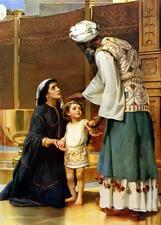
Hannah: Bible
Hannah, the second and barren yet preferred wife of Elkanah, promises to return her child to YHWH if he grants her a son. Her prayers are answered, and she follows through on her pledge to YHWH. Hannah’s narrative emphasizes the importance of fertility and childbirth in Israeli artistic narratives and presents a portrayal of an independent and resourceful woman.

Hannah: Midrash and Aggadah
Hannah is depicted by the Rabbis as a righteous woman who was devout in her observance of the commandments and tested by God through her infertility. Her story is the basis for much of the rabbinic conception and rules of prayer.
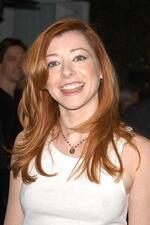
Alyson Hannigan
Leah Cohen Harby

Haredi Women's Filmmaking in Israel
In the early twenty-first century, Haredi cinema began to flourish, first in Israel and then in the United States and elsewhere. Haredi women have made films that focus on relationships among women, that are often much more aesthetically elaborate than Haredi men’s films, and that address issues that until recently were considered taboo.
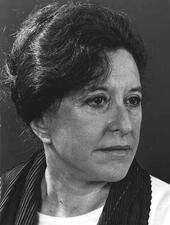
Shulamith Hareven
Born in Poland in 1930, Shulamith Hareven was an Israeli poet, author, essayist, and political activist. From capturing the lingering pain of Holocaust survivors to describing the harsh conditions of Palestinian refugee camps, Hareven used her writing to push Israelis to confront uncomfortable truths.
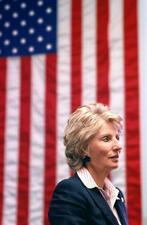
Jane Harman
The child of a refugee from Nazi Germany, Jane Harman began her career in law. After being elected in 1992, she spent 20 years as a vocal advocate of Israel, pro-choice legislation, and women’s issues as a Representative for California’s 36th Congressional District. After leaving Congress for the private sector, Harman held leadership positions in several prominent political organizations.
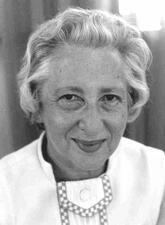
Zena Harman
Zena Harman, diplomat, parliamentarian and social innovator, helped lay the foundation for Israel's advanced network of social services, became one of Israel's foremost diplomats in Israel's formative years, and helped to establish a series of civil society organizations concerned with protecting children's rights, empowering women, and promoting greater civic engagement in public life in Israel.
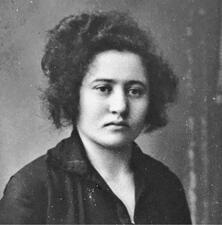
Ray Harmel
Ray Harmel was a powerful force in the trade union movement in Apartheid South Africa, a committed Communist, an anti-Apartheid activist, and ultimately a member of the African National Congress.
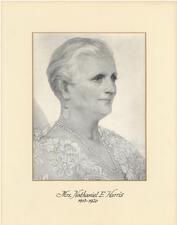
Janet Harris
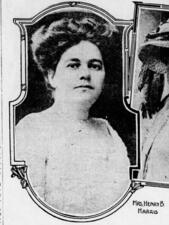
Renee Harris portrait in Pittsburgh Daily Post, 1913.
Renee Harris
Renee Harris survived tragedy aboard the Titanic to become New York’s first female theater producer. After taking over her husband’s producing career after he died when the ship sank, Harris’s first and most famous production was Damaged Goods, a play about syphilis. During World War I, she sent a troupe of actors to Paris, pioneering the practice of entertaining troops.
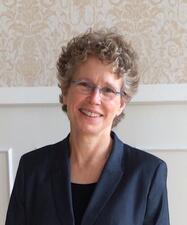
Susan Harris
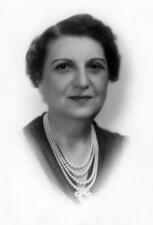
Blanche Hart
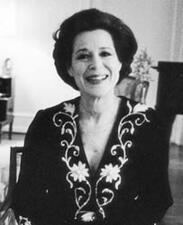
Kitty Carlisle Hart
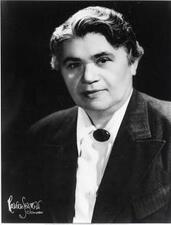
Pearl Hart
Pearl M. Hart was a pioneering attorney, activist, and educator. She devoted her life to defending the legal rights of the vulnerable and oppressed, especially women, children, immigrants, and gay men and lesbians. Her work in Chicago was instrumental in the development of the LGBTQ community there in the middle of the twentieth century.
Reina Hartmann
Reina Goldstein Hartmann focused her career on improving the lives of Jewish women in her native Chicago, serving as the leader of the Mothers Aid of the Chicago Lying-In Hospital and Dispensary as well as other organizations.
Marion Hartog
Marion Hartog and her sister Celia published influential poetry and books on Jewish themes, including works that were among the first fictions ever published by Jewish women anywhere in the world. Hartog later created and edited the first Jewish women’s periodical in history, The Jewish Sabbath Journal.
Hasidic Hebrew Fiction: Portrayal of Women
Hundreds of compilations of Hasidic literature, a genre derived from oral traditions, were published in Eastern Europe between the start of the nineteenth century and the outbreak of World War II. The image of “woman” varies in Hasidic literature according to the character in the story, its narrator, and its setting in time and place; therefore we can only refer to individual women, each on her own, and not to woman in general or women as a gender.
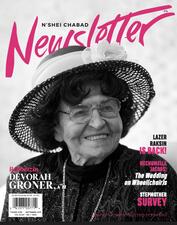
Hasidic Women in the United States
Hasidism

Haskalah Attitudes Toward Women
Just as the many well-known thinkers of the Enlightenment debated the proper role of women in society, so did the maskilim, the men of intellect who burst upon Ashkenazi Jewish society in the eighteenth- and nineteenth-century revolution known as Haskalah. Dominated by men, the movement critiqued Jewish tradition and encouraged modernity among Jews, but simultaneously met Jewish women’s pursuit of modernity with ambivalence.
Haskalah Literature: Portrayal of Women
The image of women in Haskalah literature reflects the relationship between the sexes in eighteenth- and nineteenth-century Ashkenazi Jewish society and European culture. But Haskalah writers wished to shape new patterns of male-female relationships among their reading public; to change, at least partly, the attitude of men towards women; and to ‘improve’ women’s conduct within the home and community.
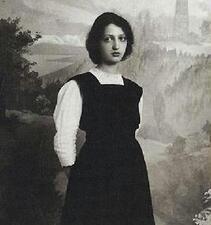
Clara Haskil
Pianist Clara Haskil was one of the greatest performers of her time. As an early prodigy, Haskil began studying music at age six and grew to have an international career, performing throughout the world and appearing at the most prestigious music festivals, in spite of chronic health challenges.
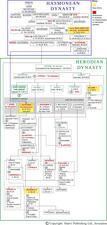
Hasmonean Women
Though few of their names were documented, the women of the Hasmonean family were important figures in political and familial affairs during the second and first centuries BCE.


